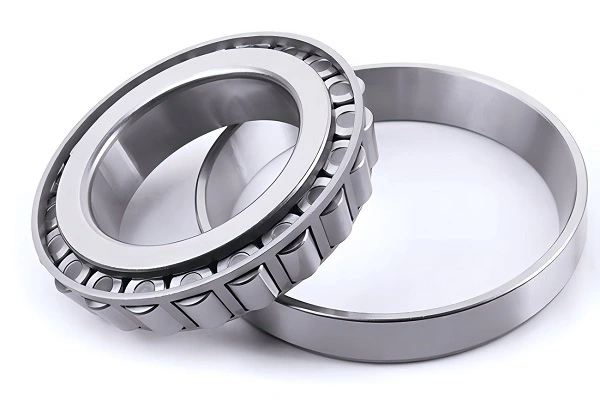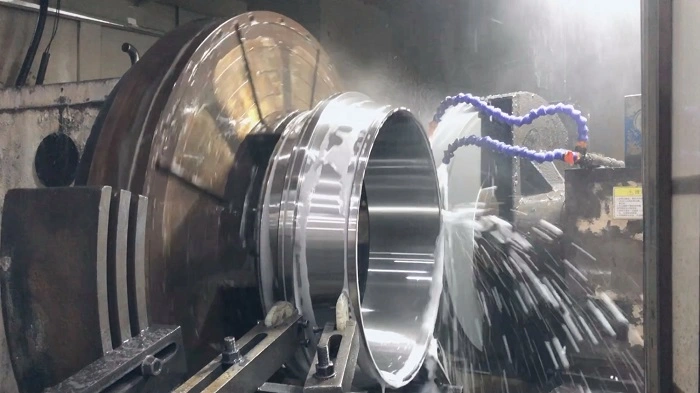What are the Key Specifications for High Speed Tapered Roller Bearings?
High Speed Tapered Roller Bearings represent a critical advancement in industrial bearing technology, combining traditional load-bearing capabilities with enhanced performance for high-speed applications. These specialized bearings maintain optimal functionality under rapid rotational speeds while handling significant axial and radial loads. Understanding their key specifications is essential for engineers, maintenance professionals, and procurement specialists across industries including automotive, manufacturing, and heavy machinery. These specifications determine operational limits, service life, efficiency, and application suitability.
What Factors Influence the Speed Limitations of Tapered Roller Bearings?

Geometric Profile and Roller Design Considerations
The geometric configuration of High Speed Tapered Roller Bearings determines their speed capabilities. Traditional designs face limitations at higher speeds due to skidding and friction between rollers and raceways. Modern High Speed Tapered Roller Bearings feature optimized roller profiles with calculated taper angles that minimize these effects. The roller-to-race contact area balances load distribution and rotational freedom. The crown profile of rollers undergoes modifications to prevent edge stress concentrations during high-speed operation. Logarithmic or specialized crown profiles ensure that as bearing components experience thermal expansion, contact patterns remain optimal rather than concentrating forces at the edges.
Cage Material and Design Influences on Performance
Cage design directly impacts maximum operational speeds. Traditional stamped steel cages cannot always provide the necessary guidance for high-speed applications. Modern High Speed Tapered Roller Bearings employ machined brass, high-performance polymers, or fiber-reinforced composites for cage construction. These materials allow for precise roller positioning and smoother guidance, reducing friction and heat generation. The cage pocket geometry ensures proper roller retention while minimizing contact friction. Premium designs feature window-type cages that improve lubricant flow, enhancing cooling effects and allowing for sustained operation at elevated speeds.
Lubrication Requirements for Enhanced Speed Performance

Lubrication is perhaps the most critical factor influencing speed capabilities. At elevated rotational speeds, conventional lubrication methods prove inadequate as centrifugal forces affect oil distribution. High Speed Tapered Roller Bearings require sophisticated lubrication systems that deliver precisely controlled amounts of lubricant to critical contact zones. Oil-air mist systems and jet lubrication methods provide cooling benefits alongside friction reduction. Lubricant viscosity must be carefully selected based on operational speed range, with lower viscosities generally favored for higher speeds. Modern bearings incorporate special surface treatments that improve oil film formation and retention, allowing for thinner lubricant films that reduce drag while providing adequate protection.
How Do Material Innovations Enhance High Speed Tapered Roller Bearing Performance?
Advanced Steel Alloys for Improved Durability
Material science has revolutionized capabilities through superior steel alloys formulated for high-speed applications. Traditional bearing steels like AISI 52100 may not deliver optimal performance under extreme conditions. Modern High Speed Tapered Roller Bearings utilize specially developed alloys with enhanced hot hardness retention, maintaining mechanical properties as operating temperatures rise. These advanced steels contain calibrated amounts of elements like vanadium, molybdenum, and tungsten that form stable carbides. Manufacturing processes include specialized heat treatments creating graduated hardness profiles that provide surface hardness for wear resistance and core toughness for impact resistance.
Ceramic and Hybrid Component Integration
Ceramic integration represents a significant advancement in bearing technology. Hybrid High Speed Tapered Roller Bearings incorporate silicon nitride or other ceramic materials for rollers while retaining steel races. Ceramic rollers are approximately 40% lighter than steel counterparts, reducing centrifugal forces during high-speed rotation. They possess superior hardness, translating to exceptional wear resistance and dimensional stability. Ceramic components have lower coefficients of thermal expansion, reducing the risk of clearance changes as temperatures fluctuate. Their natural electrical insulating properties prevent current damage that can affect all-steel bearings. While hybrid designs represent a higher initial investment, their extended service life often justifies the additional cost.
Surface Engineering and Coating Technologies
Surface engineering has enhanced performance through specialized coatings and treatments. Modern High Speed Tapered Roller Bearings feature components with diamond-like carbon coatings that provide low friction coefficients while maintaining excellent wear resistance. These ultra-thin coatings reduce frictional losses that would generate excessive heat. Other treatments include phosphate coatings that improve running-in characteristics and enhance lubricant retention. Superfinishing processes reduce surface roughness to nanometer-level values, minimizing contact and resulting friction. Some bearings undergo ion implantation or plasma nitriding that modify surface chemistry without dimensional changes, creating compressive stress layers that improve fatigue resistance.
What Precision Standards Apply to High Speed Tapered Roller Bearings?

Dimensional Tolerance Classifications and Their Impact
High Speed Tapered Roller Bearings are typically manufactured to meet or exceed ABEC 5/ISO P5 precision classifications. These standards govern critical dimensions including raceway diameter variations, roller diameter consistency, and geometric form deviations. P5 precision ratings maintain radial runout tolerances of just a few micrometers, reducing vibration tendencies. Bore and outer diameter tolerances are controlled within single-digit micrometer ranges, ensuring proper fit without introducing preload variations or clearance issues. Upgrading from P0 to P5 precision can enable speed rating increases of 15-25% due to reduced vibration, improved running accuracy, and more uniform load distribution.
Geometric Form Control and Surface Finish Requirements
High Speed Tapered Roller Bearings must meet exacting standards for geometric form and surface finish. Roundness and cylindricity deviations in raceways are typically controlled within 1-2 micrometers to ensure smooth rolling motion. Surface waviness parameters are strictly limited as they can cause vibration amplification at specific resonant speeds. The surface finish of rolling contact areas often achieves roughness values of Ra 0.1 μm or better through specialized grinding operations. This exceptional smoothness promotes optimal lubrication films that separate components even under challenging conditions. Manufacturing facilities maintain climate-controlled environments during precision grinding to prevent thermal expansion effects from compromising tight tolerances.
Dynamic Balance and Preload Specifications
High Speed Tapered Roller Bearings require carefully controlled dynamic balance characteristics to prevent vibration-induced failures. Rolling elements are matched for weight consistency, typically within 0.5-1.0 mg within a single bearing. Complete assembled units may undergo additional balancing procedures for ultra-high-speed applications. Preload specifications represent another critical parameter that must be engineered based on application requirements. Insufficient preload can permit roller skidding at elevated speeds, while excessive preload generates damaging heat. Modern designs maintain optimal preload across wider temperature ranges through careful material selection and thermal expansion coefficient matching.
Conclusion
High Speed Tapered Roller Bearings represent a sophisticated engineering solution for applications demanding both high rotational speeds and substantial load-bearing capabilities. Through advancements in geometry, materials science, lubrication technology, and manufacturing precision, these specialized components deliver performance characteristics that significantly exceed conventional tapered roller designs. Engineers selecting High Speed Tapered Roller Bearings must carefully evaluate the specific requirements of their application against the key specifications outlined in this article to ensure optimal reliability and service life.
Luoyang Huigong Bearing Technology Co., Ltd. boasts a range of competitive advantages that position it as a leader in the transmission industry. Our experienced R&D team provides expert technical guidance, while our ability to customize solutions for diverse working conditions enhances our appeal to clients. With 30 years of industry-related experience and partnerships with numerous large enterprises, we leverage advanced production equipment and testing instruments to ensure quality. Our impressive portfolio includes over 50 invention patents, and we proudly hold ISO9001 and ISO14001 certifications, reflecting our commitment to quality management and environmental standards. Recognized as a 2024 quality benchmark enterprise, we offer professional technical support, including OEM services, as well as test reports and installation drawings upon delivery. Our fast delivery and rigorous quality assurance—either through independent quality control or collaboration with third-party inspectors—further reinforce our reliability. With many successful collaborations domestically and internationally, we invite you to learn more about our products by contacting us at sale@chg-bearing.com or calling our hotline at +86-0379-65793878.
References
Harris, T.A. & Kotzalas, M.N. (2023). Advanced Concepts of Bearing Technology: Rolling Bearing Analysis. CRC Press, Boca Raton.
Zaretsky, E.V. (2022). "Thermal Management in High-Speed Tapered Roller Bearings." Journal of Tribology, Vol. 144, pp. 217-233.
Chen, W.W. & Wang, Q.J. (2023). "Elastohydrodynamic Lubrication in High Speed Tapered Roller Bearings: A Computational Study." Tribology International, Vol. 176, pp. 107-119.
Ioannides, E. & Bergling, G. (2022). "Advances in Performance Prediction for High Speed Tapered Roller Bearings." Wear, Vol. 498, pp. 204-218.
Sawalhi, N. & Randall, R.B. (2024). "Fault Detection and Diagnosis in High Speed Tapered Roller Bearings Using Advanced Signal Processing Techniques." Mechanical Systems and Signal Processing, Vol. 185, pp. 312-329.
Tanaka, H. & Matsumoto, S. (2023). "Material Innovations for Extended Life of High Speed Tapered Roller Bearings in Extreme Operating Conditions." Tribology Transactions, Vol. 66, pp. 433-451.

